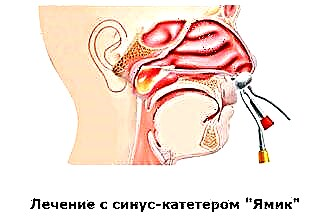 A painful and painful cough with tracheitis lasts for several days and significantly impairs the patient's quality of life.
A painful and painful cough with tracheitis lasts for several days and significantly impairs the patient's quality of life.
According to many doctors, tracheid cough is the most unpleasant and even dangerous symptom of the development of tracheitis. Paroxysmal coughing acts negatively affect the condition of the vocal cords and cause severe pain behind the sternum.
In children, seizures can cause hypoxia, respiratory failure, tachycardia and other rather serious complications.
Features of the cough syndrome
Why does a tracheid cough occur and how long does it last? The surface of the tracheal mucosa is covered with cough receptors. Inflammation of the airways provokes irritation of the cough receptors, as a result of which there is a sharp forced exhalation.
However, it should be noted that coughing with tracheitis plays a protective role - during a coughing act, mucus and pathogens are evacuated from the tracheobronchial tree and airways. In other words, forced exhalation helps cleanse the respiratory tract from foreign agents, viscous secretions, dust and allergens.
In infants, seizures provoke the development of gastroesophageal reflux and diaphragmatic hernias. Tracheid cough by the nature of the manifestation practically does not differ from whooping cough. During an attack, the patient feels a burning sensation behind the breastbone, a scratching in the throat and a lack of oxygen.
In addition, young children often cannot cough up phlegm effectively, so a harsh cough only makes them feel worse, causing them to vomit or faint.
Causes
What is the reason for a tracheal cough? It should be noted that tracheitis rarely develops as an independent disease. It is often preceded by laryngitis, bronchitis or pharyngitis, the typical manifestation of which is cough syndrome. There are a number of factors that cause cough with tracheitis:
- inhalation of dust and allergens;
- inhalation of frosty or dry air;
- sharp inhalation or exhalation.
With allergic tracheitis, a cough attack is accompanied by lacrimation, severe runny nose, conjunctivitis and shortness of breath. Sometimes the allergy has a protracted course, as a result of which a dry cough can persist for 7-10 days. When a pathological symptom appears in children, it is recommended to use antitussives, which can alleviate the course of the disease.
A lingering hacking cough can lead to the accumulation of air in the pleural cavity, resulting in severe pain behind the sternum.
In most cases, seizures are worse at night, which interferes with rest and sleep. With a protracted course of tracheitis, pathological symptoms persist and negatively affect not only the physical, but also the mental state of the patient. Patients complain of irritability, outbursts of anger, apathy and developing depression.
Cough characteristics
How long does a cough last with tracheitis? The duration of the cough syndrome largely depends on the characteristics of the course of inflammatory reactions in the trachea and the dynamics of the patient's recovery. With chronic tracheitis, patients may cough for 2 weeks or more.
Tracheid cough is classified according to several criteria, namely:
- in duration - acute (lasts no more than 7 days), chronic (worries more than 2 weeks in a row);
- in depth - superficial (muscle contraction occurs at the level of the upper airways), deep (hacking scratching cough that occurs when the muscles of the larynx and trachea are strained);
- by productivity - dry (without sputum separation), wet (with expectoration of mucus).
In people with cardiovascular disease, coughing attacks lead to tachyarrhythmias and bradyarrhythmias.
The mucous membrane of the trachea contains a small number of goblet cells that produce mucus. Therefore, the severity of the symptomatic picture and the characteristics of the cough largely depend on what kind of infection triggered the development of tracheitis.
Dry cough
At the first stages of the development of tracheitis, patients develop a dry tracheid cough, which turns into a productive cough within 4-5 days. The attacks cause severe chest pain, sore throat, lacrimation, hypersalivation, and shortness of breath. If the duration of an attack exceeds 5-7 minutes, it can lead to hypoxia and even loss of consciousness. Constant attacks negatively affect the patient's well-being and cause headaches.
After a few days, the mucus in the airways liquefies and begins to separate from the walls of the trachea and bronchi, as a result of which the cough becomes productive. Throughout the entire period of the illness, patients complain of a scratching in the throat, a burning sensation behind the breastbone and a lack of oxygen. During an attack, patients try to breathe only superficially, because sharp breaths irritate the tracheal mucosa even more and prolong the attack.
Moist cough
When mucus is separated during coughing, the patient's condition improves slightly. However, seizures may remain for some time even after complete regression of inflammation in the trachea. Together with sputum, pathogens are evacuated from the respiratory tract, which caused inflammation of the tracheal mucosa.
If tracheitis occurs against the background of chronic bronchitis or laryngitis, the expectorant mucus may contain impurities of pus or blood.
In case of hemoptysis and detection of purulent exudate in the secreted secretion, it is advisable to consult a therapist or otolaryngologist.
Degenerative changes in the tissues of the lower respiratory tract can lead to serious consequences, up to bronchial obstruction. In turn, obstruction of the tracheobronchial tree leads to respiratory failure, etc.



